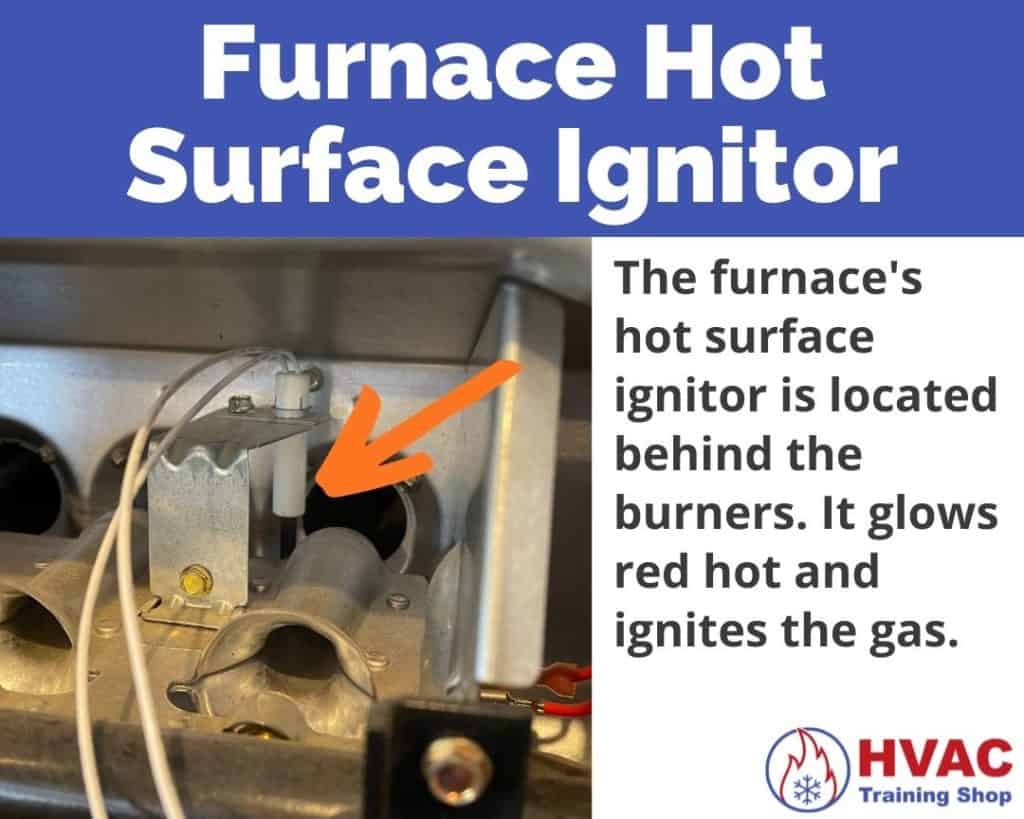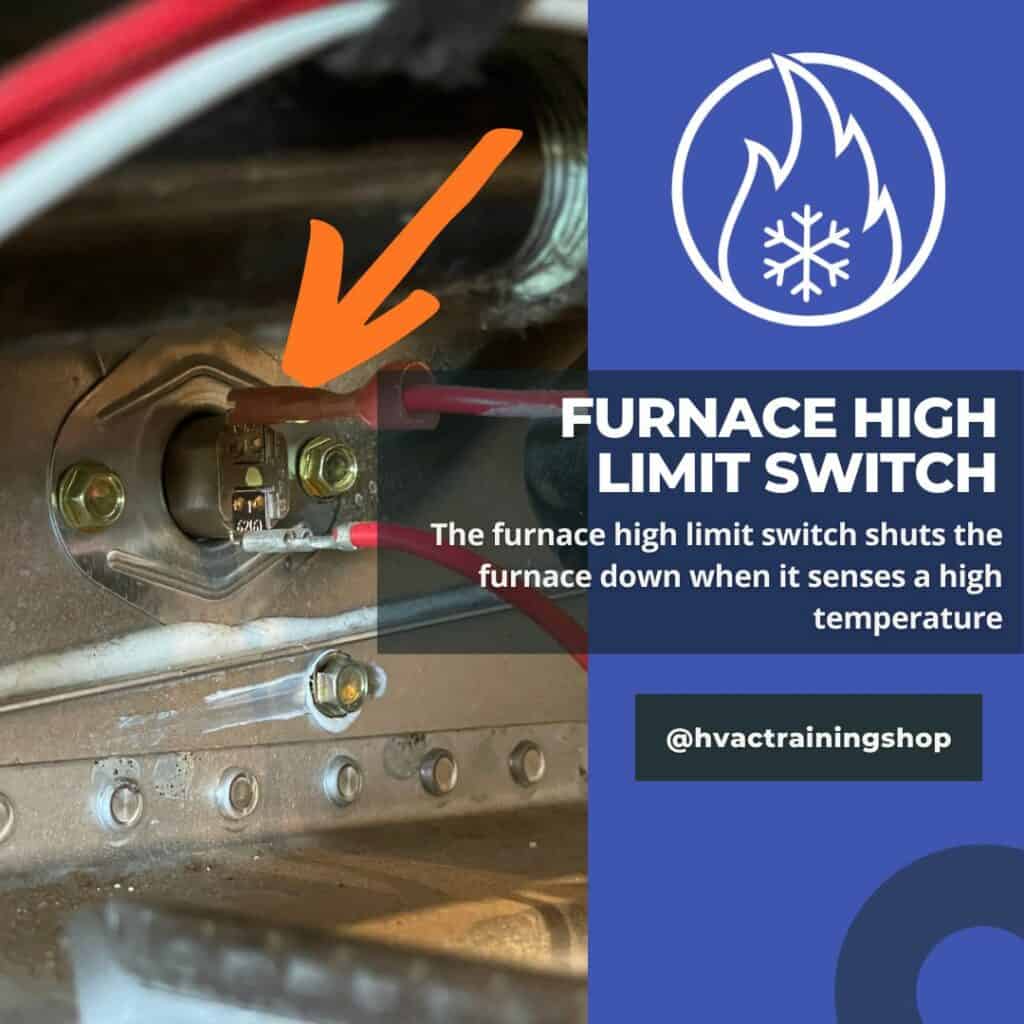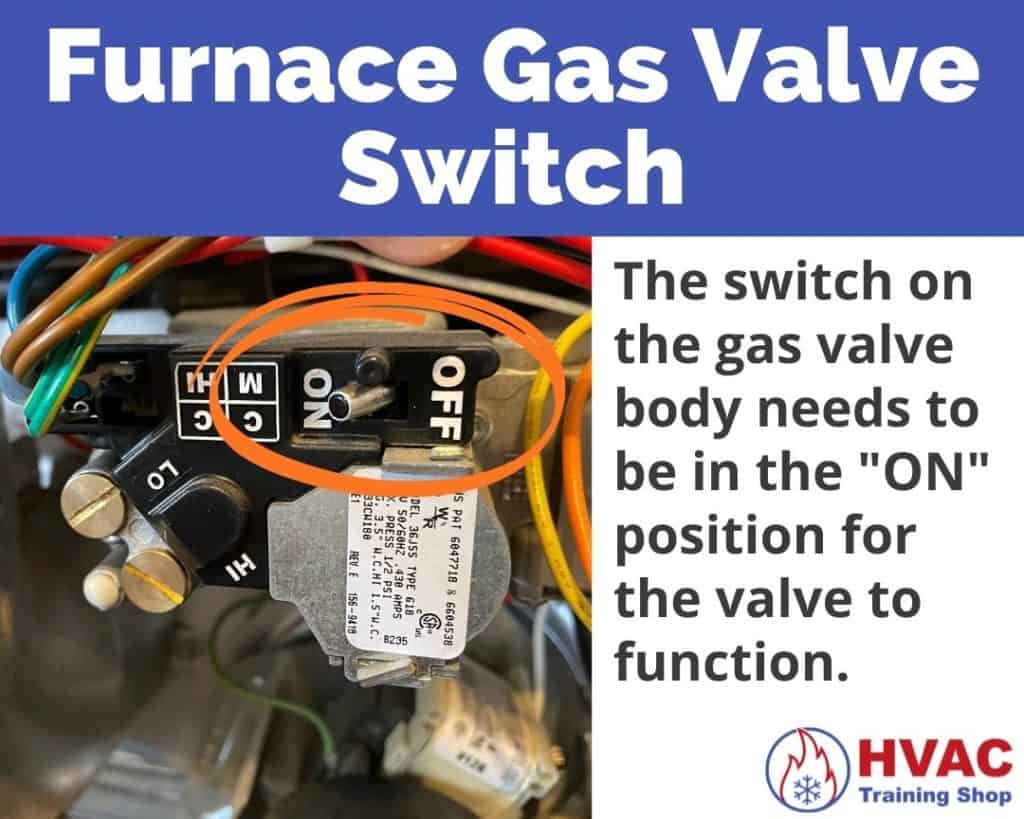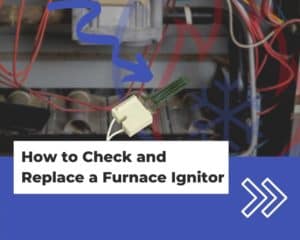It’s the dead of winter and your furnace suddenly stops working. So you call the local HVAC company, but they are booked till next week. Yikes.
If you’re the type of person who prefers to give things a shot themselves, then I’ve got some tips for you to help get the heat going again!
In this article, I’ll cover 13 things that you should check if your furnace is not working. I’ll also go over some basic troubleshooting steps if your home’s heater is not turning on.
Let’s get started!
What to do if your furnace isn’t working
Here are the steps that you should take if your furnace isn’t working:
- Check if the circuit breaker is tripped
- Replace the dirty air filter
- Clean the flame sensor
- Check if the ignitor is bad
- Check if the flame rollout switch is tripped
- Check if the inducer fan is working
- See if the exhaust flue is blocked
- Check if the pressure switch is stuck open
- Check if the blower motor is working
- Check if the high limit switch is tripped
- Check if the gas valve is stuck
- Check the drain line for clogs
- Check if the control board is bad
I’ll go over them below.
Check if the circuit breaker is tripped
Did your furnace suddenly lose power?
Most likely it’s the circuit breaker that tripped.
If your circuit breaker trips, then there may be a problem with the furnace. Reset the circuit breaker. Then, check the furnace again to see if it is working. If so, then it may have been a one-off problem. If the breaker trips again, there may be something else wrong with your furnace.
Here are a few reasons why a furnace will trip its circuit breaker:
- Airflow restriction
- Blower motor capacitor
- Blower motor is bad
- Short circuit
- Loose wire
- Bad circuit breaker
For more information about furnace circuit breakers, check out my article below:
Replace the dirty air filter
A dirty air filter causes all sorts of issues in a furnace. The airflow restriction from a dirty air filter will make your furnace run less efficiently. It’s basically like suffocating your furnace while it tries to heat your home.
Your furnace’s blower motor will have to work much harder to provide air to your home, causing it to use more electricity than normal. A dirty air filter can also cause the high limit switch to trigger, shutting off the heat.
By replacing the air filter, you ensure that your furnace is getting adequate airflow. Just be sure to use a standard pleated filter and you’ll be fine. For most homes, I recommend using a filter with a MERV rating of about 5 to 8.
Clean the flame sensor
A dirty flame sensor is one of the most common problems in a furnace. If your flame sensor is dirty, then your furnace won’t heat up. Why is that?
The purpose of the flame sensor is to detect when the furnace has a flame. If there is no flame in the furnace, then the furnace will shut down to prevent unburned gas from leaking out.
That’s why it’s important that the flame sensor is clean—your furnace needs to know that it’s working properly. A dirty flame sensor won’t properly detect a flame.

To clean the flame sensor, you’ll need to take the furnace apart and scrub the char off of the flame sensor rod. I like to use a scouring pad for this.
For the step-by-step on how to clean a furnace flame sensor, check out my article below:
Check if the ignitor is bad
The ignitor is the part that lights the flame inside the furnace. If the ignitor is not working, then your furnace won’t be able to make any heat.
Most furnaces nowadays have a hot surface ignitor. This type of ignitor glows bright orange when it gets hot—that’s a good way to tell if it’s working or not.

The ignitor turns on after the inducer fan, so start watching for the orange glow after you hear the inducer turn on.
Check out my guide below on how to check your furnace’s ignitor:
Check if the flame rollout switch is tripped
The flame rollout switch is a critical safety device in a furnace. Its role is to prevent your furnace from catching on fire. Literally.
It’s needed because sometimes the flames inside the furnace can “roll out” of the heat exchanger and burn the rest of the furnace. If this happens, the flame rollout switch trips and shuts down the furnace to prevent damage.

Once the rollout switch trips, you need to manually reset it before your furnace will run again.
For a guide on everything regarding a flame rollout switch (including how to reset it) check out my article below:
Check if the inducer fan is working
When a gas furnace heats up, toxic gases are formed. The inducer fan is responsible for removing these toxic combustion byproducts out of your home.
If the inducer fan is not working, then your furnace won’t heat up. If your furnace’s inducer fan is not working, it could be due to one of several reasons:
- Inducer fan is stuck from debris
- Inducer fan motor bearings are bad
- Inducer fan motor power issues
- Bad inducer fan motor capacitor
- Bad furnace control board
Keep in mind that if your inducer fan is spinning but your furnace is still not heating, then your exhaust flue could be blocked.
For a guide on what you should do if your inducer fan is not working, check out my article below:
See if the exhaust flue is blocked
The exhaust flue is the pipe that the inducer fan is connected to. When the inducer fan runs, it blows the toxic combustion gases through the exhaust flue. The exhaust flue leads to the outside of the house so the combustion gases don’t stay in your home.
Sometimes, the exhaust flue will get blocked for one reason or another. If the exhaust flue is blocked, then the inducer fan won’t be able to work properly. Worse yet, your furnace might stop heating completely.
Here are some common reasons why an exhaust flue will be blocked:
- Bird’s nest in the exhaust flue
- Snow blocking exhaust flue
- Excessive soot buildup
- Damaged exhaust flue
Check out my article below to figure out what you should do if your furnace’s exhaust flue is blocked:
Check if the pressure switch is stuck open
The furnace’s pressure switch is responsible for checking whether the inducer fan is working properly.
When sufficient airflow is detected through the exhaust flue, the pressure switch closes and allows the furnace to heat up.
If the inducer fan is running and the exhaust flue is clear, the pressure switch will trigger closed and the furnace’s ignitor will light up.
There are some cases where the pressure switch will get stuck open:
For example, if your furnace’s pressure switch gets damaged or one of the hoses cracks, then the pressure switch won’t trigger—even if the inducer fan and exhaust flue are clear and working correctly.
If your furnace’s pressure switch is stuck open, then check out my article below:
Check if the blower motor is working
The furnace’s blower is responsible for circulating air throughout your home. So it’s quite easy to tell if your blower motor goes bad—you won’t have any airflow from the vents in your home.
So what causes a blower motor to go bad? Here are a few reasons:
- Overheating
- Bad bearings
- Damaged fan blade
- Rusted fan motor
Keep in mind that if your furnace’s blower has a fan belt, then the belt could be broken. Be sure to check if the fan belt is broken first before you condemn the entire blower. Replacing the fan belt is fairly simple, but don’t be afraid to call an HVAC professional if you’re not comfortable replacing it.
Another common reason why a blower motor doesn’t work is due to the capacitor. The capacitor provides the initial “jolt” of energy to get a blower motor spinning.
For more information on how to diagnose a bad blower motor, and some tips on how to get your blower motor spinning again, check out my article below:
Check if the high limit switch is tripped
The furnace’s high limit switch trips when the supply air in the furnace gets too hot. When the high limit switch trips, the furnace will turn off its heat for a few minutes and circulate room-temperature air around your home.
A high limit switch usually trips due to low airflow. The #1 reason is a dirty air filter, but a tripping high limit switch can also be caused by blockages in the air ducts or a bad blower motor.

High limit switches can also get dirty. A dirty high limit switch will trip excessively, even when it’s not supposed to. If your furnace’s high limit switch is dirty, then you can scrub it off using sandpaper or a scouring pad.
For more information on how to troubleshoot a high limit switch, check out my article below:
Check if the gas valve is stuck
The gas valve is responsible for delivering a steady stream of gas to the furnace’s burners.
If the gas valve is stuck closed, then the furnace won’t fire up.
The first thing you should check is that the manual gas valve is open. The gas valve handle should be parallel with the pipe that it’s attached to.
Some furnace gas valves have a switch on them. The switch is a simple on/off switch that’s used to disable the gas valve during the summer.

A stuck gas valve is rare, but it does happen. One way to unstuck a furnace gas valve is to give it a whack with a wrench or a slight tap with a hammer. The impact will sometimes unstick the gas valve and cause it to open up.
For more information on troubleshooting a furnace gas valve, check out my article below:
Check the drain line for clogs
Most folks think that only air conditioners have condensate drain lines. While that’s definitely the case, the truth is that some furnaces do too.
If you have a high-efficiency furnace, then it will have a condensate drain line. High-efficiency furnaces absorb so much heat that condensation forms inside of them. The condensate flows out of the furnace through the drain line.
The furnace condensate drain line is prone to clogging, just like air conditioners.
There are a few methods you can use to unclog your furnace’s condensate drain line. The easiest way is to unclog it by hand. For more stubborn clogs, you may need to use a wet-dry vacuum to suck the debris out of the drain line.
A drain snake can also be shoved up the pipe to dislodge the slime from the drain line. If all else fails, then a drain gun is a last resort to force the clog out of the pipe with high pressure.
For more information about unclogging your furnace’s drain line, check out my article below:
Check if the control board is bad
The furnace control board is an electrical device inside most modern furnaces. It essentially enables the furnace to know what it needs to turn on or turn off.
A bad furnace control board will manifest itself in a number of ways. Usually, it’s pretty obvious when you have a bad control board. For example, you’ll smell that “burnt electronics” smell coming from your furnace.
Other times, it’s not so apparent. For example, your furnace may start behaving weirdly, turning on or off things when it’s not supposed to.
Before you replace your control board, you should look at a few things:
- Inspect the control board for any burns or melted components
- Check the control board’s diagnostic light for any error codes
- Check for power going to the control board
- Jump the thermostat terminals to test the control board sequence
After doing these tests, if you find that the control board is bad, then you will need to replace it. Replacing the control board is a complex task because of all the wires connected to it. You also need to make sure that you get the correct replacement board. For more information about furnace control boards, check out my article below:



